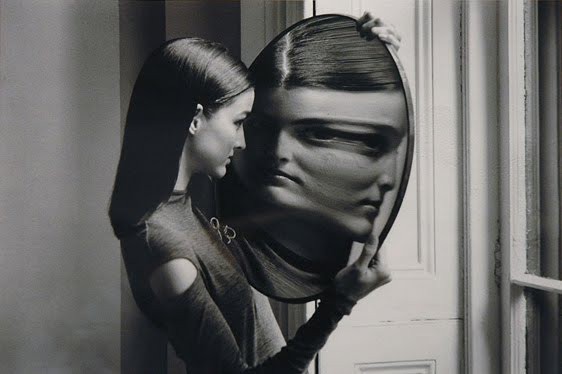
Body Dysmorphic Disorder in Teens: Is Your Child Suffering From It?
October 3, 2018
When you look in the mirror, you may see a pimple on your chin, a mole on your nose, or notice that your face isn’t exactly symmetrical. While these slight flaws may bother you a little, you probably don’t spend hours each day thinking about them. However, if your teenage son or daughter has body dysmorphic disorder (BDD), he or she cannot stop thinking about their perceived or slight, real flaws.
Body Dysmorphic Disorder Statistics
- BDD affects between 1.7 to 2.4% of the general American population, approximately one in 50 people. That means BDD affects between five and 7.5 million people in the United States.
- BDD affects men and women about equally. It affects approximately 2.5% of males and 2.2% of females.
- BDD most commonly begins in adolescents 12 to 13 years of age.
- Someone with BDD can find fault with any part of the body, but the most common body parts they are dissatisfied with are the skin, hair, nose, breasts, muscle tone, and stomach.
- More than 90% of people with BDD are unhappy after undergoing cosmetic surgery. This can actually worsen the symptoms of BDD.
- People with BDD have a suicide rate 45 times greater than the general population.
What is Body Dysmorphic Disorder?
Body dysmorphic disorder is a mental illness in which someone is preoccupied with one or more perceived or slight, real flaws in their appearance. These flaws are either nonexistent or minor to others. To a teen with BDD, however, these flaws can make them feel ashamed, self-conscious, and anxious, which may lead them to avoid social situations.
Signs and Symptoms of Body Dysmorphic Disorder
If your teen has BDD, they will display these signs and symptoms of the condition:
- She is preoccupied with a perceived or minor flaw in her appearance. She believes that this flaw makes her deformed or ugly. She believes that others focus on the flaw and view her appearance in a negative way. However, others either see the flaw as minor or nonexistent.
- Your teen engages in behaviors to try to hide or fix the perceived flaw, such as frequently grooming, checking themselves in the mirror, skin picking, or using makeup, styling, or clothes to try to hide the flaw. Your teen may seek out cosmetic surgery to try to fix the flaw. If your teen undergoes cosmetic surgery, he may feel temporary satisfaction, but their anxiety about this flaw will return.
- Your teen constantly compares her appearance to others.
- Your teen constantly seeks reassurance from others about their appearance.
- The preoccupation with the perceived flaw causes your teen significant distress and interferes with your teen’s ability to function in daily life.
How BDD Affects Your Teen’s Life
If your teen has BDD, the disorder will significantly impair her ability to function in daily life. For instance, she may begin doing poorly in school because the anxiety about her appearance makes it difficult to concentrate in class or on her homework. Your teen may often be late to class because she is preoccupied with checking herself in the mirror.
A teen that has BDD may find it difficult to interact with both teachers and peers. They may even avoid going to school. In fact, a study found that 18% of teens with BDD dropped out of school due to the severity of their symptoms.
Their social relationships may also suffer. Your teen may avoid social situations. Your teen may argue with their friends or with you about their appearance. Even if you reassure them that he looks fine, it’s difficult for them to believe that you’re not just saying that. Friends may stop inviting your teen out because he either always says no or cancels at the last minute, and you might find yourself getting frustrated because your teen spends hours in the bathroom trying to fix their perceived flaw.
What You Can Do to Help Your Teen with BDD
If you think your teen has body dysmorphic disorder, there are several things you can do to help her. First, remember that while BDD seems like a vanity issue, it’s not. Remember that your teen has poor insight when it comes to her perceived flaw.
Encourage your teen to participate in social and family activities, but don’t push or lecture them into participating in such activities. Try to be supportive and maintain a positive, healthy relationship with your teen. Show them unconditional love, and encourage them to talk about their struggles and concerns with you. Educate yourself about BDD. Be a good role model, and talk positively about your own body.
Help your teen get professional help for BDD. Talk about treatment positively, letting your teen know that it might be beneficial to have someone to talk to who understands BDD. Don’t focus on how the condition negatively affects you or others.
If your teen has BDD, you may want to consider residential treatment at a facility like Hillcrest Adolescent Treatment Center. Our staff is trained to help your teen navigate the unique challenges she faces. We help adolescents identify and deal with the underlying causes of BDD. We take each teen’s individual needs into account when creating a treatment plan. If you believe your teen has BDD, please give us a call to learn more about our program and to determine if our treatment center is right for your teen.
Sources:
https://www.isaps.org/wp-content/uploads/2018/01/Body-Dysmorphic-Disorder.pdf
http://www.mentalhealthamerica.net/conditions/body-dysmorphic-disorder-bdd-and-youth
https://adaa.org/understanding-anxiety/related-illnesses/other-related-conditions/body-dysmorphic-disorder-bdd#Characteristics%20of%20BDD
